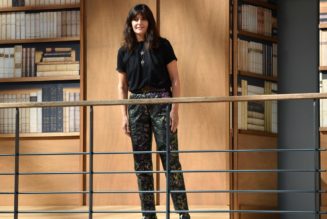
PARIS, Oct 24 (Reuters) – Sales at Hermes rose briskly in the third quarter, beating expectations and outshining rivals as economic headwinds did not stop its wealthy clientele from splurging on high-end Birkin handbags.
“Despite an uncertain context, our outlook remains unchanged,” said Eric du Halgouet, Hermes’ executive vice president finance.
Hermes shares traded up 1.5% in mid morning trading.
Analysts have cut their estimates for the luxury sector in recent weeks following a sales report from bellwether LVMH earlier this month showing shoppers are splashing out less on high-end fashion as inflation and economic uncertainty rise.
But Hermes, which caters to shoppers who can afford handbags like the coveted $10,000 plus Birkin model, has a reputation of weathering economic turbulence better than rivals.
“Another quarter of industry-beating growth is likely to position Hermes as an interesting play in an out-of-favour sector,” said Thomas Chauvet of Citi.
Sales in the Americas rose 20%, despite smaller price hikes than in other parts of the world, with even growth rates on both U.S. coasts, Hermes said. The Madison Avenue store in New York, which opened in October last year, also contributed strongly.
In Europe, sales grew 18.1%, with Du Halgouet noting no sign of a slowdown in tourist traffic in the region, and no slowdown in France, including in the first weeks of October.
“We are attentive,” said Du Halgouet, noting an uncertain geopolitical context could affect tourism.
Store traffic continued to rise strongly in mainland China, with a strong bounceback in business in July and August, and an acceleration in the third quarter.
“This is a homogenous progression across all geographies and product categories,” said Bernstein analyst Luca Solca.
Sales for the three months to the end of September stood at 3.37 billion euros ($3.60 billion), a 15.6% rise at constant exchange rates, beating a Visible Alpha consensus for 14% growth. Sales were brisk in all regions, particularly the U.S.
Hermes has raised prices by around 7% this year globally to account for higher production costs, with the exception of the U.S., where increases were around 3%, and Japan, where they were in the double digits due to currency fluctuations.
($1 = 0.9368 euros)
Reporting by Mimosa Spencer; Editing by Ingrid Melander and Jan Harvey
Our Standards: The Thomson Reuters Trust Principles.









